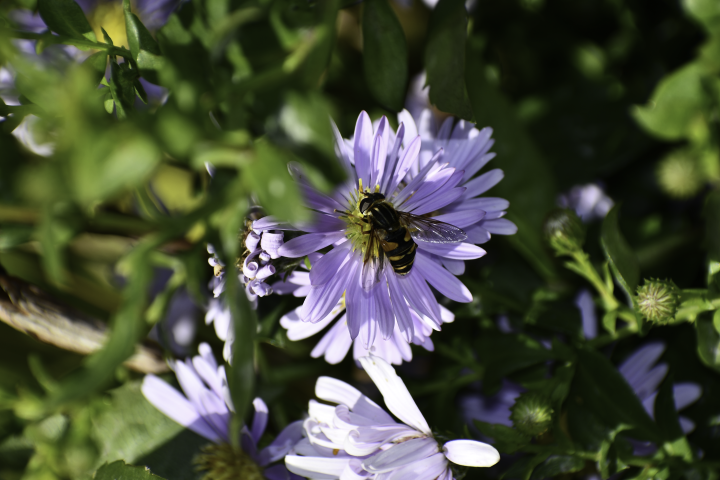Now is a good time to start planning your bee garden. Planting a variety of plants that support honeybees is a great way to help out the bee population. Plus a bee garden can make your yard look spectacular. And don’t worry, you don’t need a big yard to help do your part to support honeybees. If you do not have a big yard you can create some beautiful planters for your patio or deck. You just need an outdoor area for your bee garden.
Step One: Planning
The first step in planning your bee garden is to determine the planting zone that you live in. This will help you select plants that will thrive where you live. Many of the plants that you can choose from are annuals that grow in a wide range of areas. Perennials that are good for your bee garden might not thrive in all growing zones. For example, a perennial plant that cannot tolerate temperatures below 32 degrees might not be a good choice for a northern garden.

Check out this resource for bee-friendly native plants for your area
Step Two: Location and Size
The next step is to determine the size and location of your garden. You’ll want to consider how much sun does your planting area receives or if it gets a lot of shade. If your site gets a lot of shade you might be limited in your selection of plants. Size is the other factor to consider. You will want to tailor your plant selection to the size of the area you are planting. Whether that is a large outdoor flower garden or several pots on a patio or deck. If you are planting a large flower bed you may want to grab a piece of paper to sketch out your plan.
Step Three: Picking the Plants
There are lots of resources on the web for picking various colors and sizes of plants to fit the space and design you want. I like to mix size, texture, and complementary colors in my plantings. Though truthfully, I rely on my wife to make keep me from picking plants that clash.

Step Four: Planting
Once you have your plan, it is time to order seeds or head down to your favorite garden supply or nursery to pick up some plants. If you are going to start plants from seed, now is a good time to be picking ordering your seeds. You will want to start them indoors a few weeks ahead of the last frost in your area. While you are shopping don’t forget to pick up seed starting medium (soil) and containers to start the seeds in.

If you are going the planter route and buying plants, don’t forget to also pick up some pots and potting soil. I have had good luck with Miracle Grow potting soil and my favorite is Kellogg All Natural Raised Bed & Potting Mix. And if you are not using the Miracle Grow brand or some other that has a fertilizer mixed in, then do not forget to pick up a good fertilizer tailored to your plants. Just a note that the Kellogg brand referenced above does not come with fertilizer mixed in.
Check out our thoughts on three ways to buy bees
When transplanting my plants I also like to use a supplement feed that contains vitamin B. It seems to help with transplant shock. I simply mix it per the instructions and and use it when I water my newly transplanted plants. And during the transplanting process do not forget to stake any tall unstable plants. The roots of newly transplanted stock will not be adequate to initial support a tall plant.
We wish you well in planting your bee garden. Not only will the bees and other native pollinators enjoy it but it should bring some colorful cheer to you as well. And if you want to share your creations, head on over to our Facebook page and add a picture in the comment section of the Bee Garden post.
